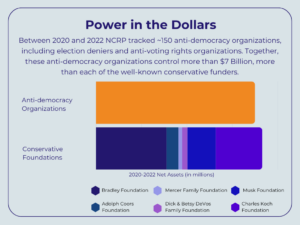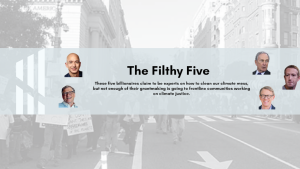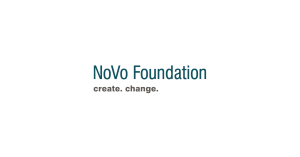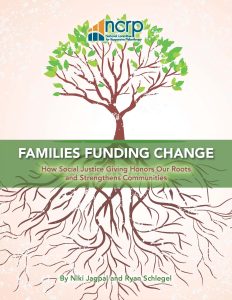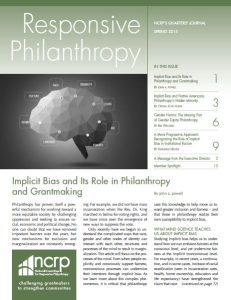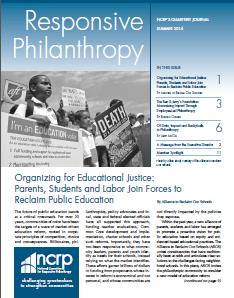This commentary was originally published on Nonprofit Quarterly.

Last month brought the announcement that William Penn Foundation executive director Laura Sparks has accepted the position of president at the Cooper Union for the Advancement of Science and Art, a college in New York City founded on principles of equity and inclusion. Given Sparks’ longstanding commitment to underserved urban communities and demonstrated leadership capacities, this should bode well for Cooper Union. But what does it mean for the William Penn Foundation, a $2.4 billion family foundation that has been plagued with leadership challenges over the last several years? And, more importantly, what about the residents of Philadelphia?
In 2014, I conducted a Philamplify assessment of the foundation, asking “Is Philadelphia’s Leading Philanthropy Back on Track?” During that time, William Penn had just gone through a tumultuous period. One CEO, Jeremy Nowak, whose leadership style was blunt and whose education stances aroused controversy, departed after only 16 months, having disrupted the quiet, understated style of the Haas family. Helen Davis Picher did her best to limit damage and steady the boat as interim president for more than a year. Meanwhile, the board downgraded the top staff position from “president and CEO” to “managing director,” making it very clear from the job description that the family would maintain control over key hiring and firing decisions and other duties normally entrusted to a chief executive.
Just as our report was coming out, word came down that Peter Degnan, a former academic vice dean of finance, had been hired for this new position. When we discussed our report findings with him, he was very receptive to our recommendations, particularly that the board should better reflect the diversity of the city it served.
Degnan was gone within six months.
This time the board acted more quickly, promoting Laura Sparks from within to become “executive director.” The title change was meant to signal a move back toward greater executive authority, perhaps because Sparks was a trusted, known quantity as chief philanthropy officer. Sparks had impressed our team during the Philamplify review process as someone who had a genuine commitment to equity and to ensuring that William Penn was an effective partner to its grantees. As the number-two program staffer, she had already taken steps to address many of the critiques raised in our surveys and interviews with hundreds of nonprofits and local stakeholders.
But Sparks lasted just two years before announcing her departure. However the move was messaged, one can only wonder what would prompt someone to leave her perch as the head of the biggest funder in Philly, doling out more than $100 million a year in grants for education, the environment, and the arts.
To recap: In five years, William Penn has gone through four executive leadership changes. What hasn’t changed much is the board leadership, and therein may lie the problem.
According to its website, “A corporation composed of Haas family members governs the William Penn Foundation, along with a board that includes both family members and public directors selected for their professional and civic expertise.” Our report praised the foundation for welcoming next generation Haas family members onto the board, but we also critiqued the board for its lack of diversity. It has gone in the direction of fewer and less diverse outside voices over time.
Currently, it appears that all board members are white and from the professional class; two-thirds are male. Yet Philadelphia’s residents are almost two-thirds people of color, and more than a quarter live in poverty. While the “civic expertise” of non-family board members is no doubt valuable, it is not lived experience shared by the vast majority of Philly residents.
Aside from the serious problem of lack of diversity, we also noted in the report that several interviewees identified “volatility among the family leadership as a key challenge” and found that “William Penn has struggled to find the right balance in governance and leadership style that is true to the Haas legacy and effectively supports mission implementation.”
Sparks’ departure suggests these dysfunctions within the board have not been resolved. One foundation CEO with knowledge of the situation said, “I’m not surprised Laura left. What the board is trying to do is not functional. They want a functionary and a manager, not a leader, and that isn’t going to work.”
We didn’t call out specific individuals in our report, but perhaps our choice to be circumspect merely helps perpetuate the problem. Informants close to the foundation pointed to the unpredictable leadership of Janet and David Haas, who are reportedly often at odds with each other, as the source of the board’s challenges. One knowledgeable source said:
They need strong leadership. The place has to evolve. […] [David and Janet] are the two ultimate rulers over there. Right now, it’s been about them for the last 10 or 15 years, and it will be about them for the next 10 years. […] I don’t give a [hoot] who they bring in there, unless Janet’s role is real defined and she can’t overreach, unless she gets in a role that is legitimate and manageable, it’s going to be hard. Defining Janet’s role in that foundation is critical to its future.
As the “800-pound gorilla” of philanthropy in Philadelphia, the fallout from William Penn’s family dynamic is being felt by the city’s residents, particularly through its arts, education, and environmental grants. With the waning local presence of Annenberg Foundation and Pew Charitable Trusts, William Penn is the most influential local funder, whether it wants to be or not. Its volatility at the top and failure to exercise coherent and consistent public leadership hinders its impact on the very communities it seeks to benefit.
For example, our report found that this volatility affected the foundation’s education equity agenda and damaged the capacity of nonprofits advocating and organizing for more public funding for the starved public education system. Much of that work had to be rebuilt under Sparks.
I urge the board to take three steps to strengthen its capacity to serve Philadelphia’s pressing needs:
- Recruit to the board knowledgeable Philly leaders of color and others who understand the experiences of marginalized groups, such as the LBGTQ community and residents with disabilities.In doing so, William Penn can gradually increase the percentage of non-family board members, ensuring that diverse perspectives can support better decision making.
- Develop and publicly share a succession plan that invests in new board leadership, with a clear timetable for David and Janet Haas to cede power to others in the family, as well as future non-family board members. Transparency will build confidence among Philadelphians that the status quo will not continue indefinitely.
- Return to a President/CEO chief executive role. A $2.4 billion foundation with ambitious goals and high caliber staff needs a leader at the top who is fully empowered to execute the foundation’s vision for a more equitable and vibrant city. Many excellent candidates will be dissuaded from seeking the top role if they fear they will be hamstrung by board overreach and volatility.
These recommendations are based on the extensive feedback I received from the foundation’s own constituents. It underscores that not only is the Haas legacy at stake, but more importantly, also on the line is the potential for William Penn to continue to do great things for its home city, in partnership with the communities it has been serving in one form or another for more than 70 years.
Lisa Ranghelli is senior director of assessment and special projects at the National Committee for Responsive Philanthropy (NCRP), where she leads Philamplify, an initiative that combines expert assessment and critical stakeholder feedback to improve grantmaking practices and boost equitable outcomes in communities. Follow @lisa_rang and @NCRP on Twitter.









